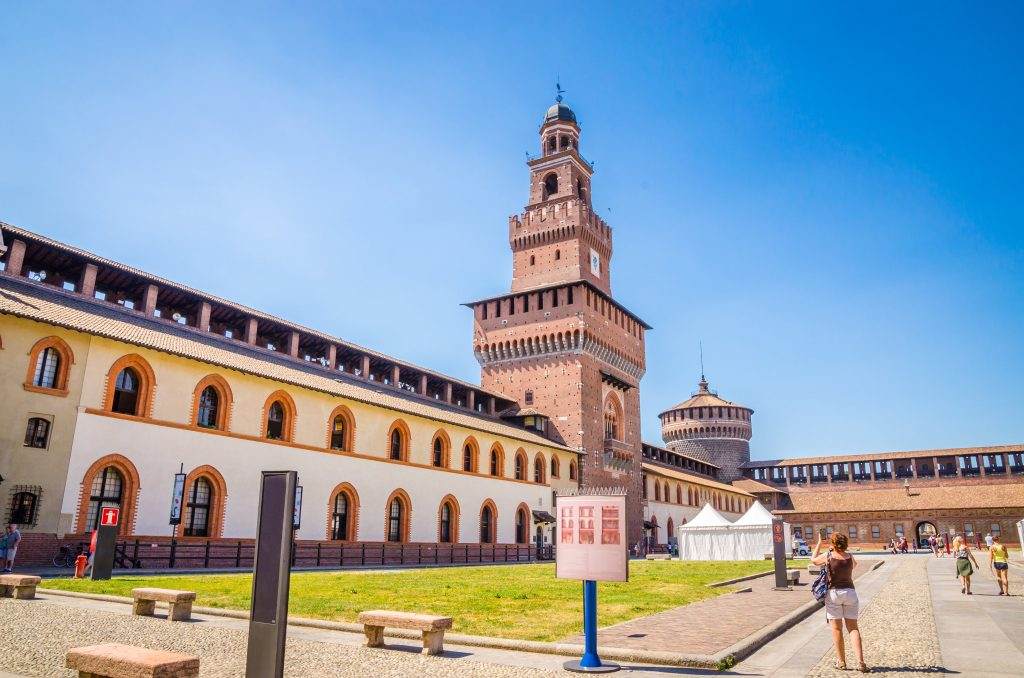19 Jul Author paths. From Hotel Cavour to the Triennale in Parco Sempione
For our new journey of "author paths", today we are with Carlotta Collarin and Emanuela Biscotti respectively an archaeologist and an art historian both of them born in Milan, still living here and passionate about their city, so much that decided to become tourist guides.
Together they founded Acànto that offers to the curious citizen, to the manager and to the traveler, exciting itineraries to discover the Milanese works of art, the world from which they originated, the culture and its many manifestations.
We asked Carlotta and Emanuela to accompany us from our Hotel, where we met, to Palazzo dell'Arte (Triennale) to discover together some glimpses of an unusual and unexpected Milan.
We’ll start walking and officially begin our walk from the vaults of Porta Nuova, an ancient door to enter inside the city along the route of the medieval city walls. Then take Via Manzoni, a street dedicated to fashion, which starts from this point.
Here our guides, advise us not to dwell too much on the shop windows but to peek inside the courts. The real wonder is there, it is no coincidence that once this street was called 'Garden Lane'!
We could easily get to Piazza della Scala, but instead we decide to turn right, in the narrow Via Romagnosi, where you will find a beautiful fountain... one of the few present in Milan, which, until not too many years ago, was crossed by canals, but that built very few fountains! It's the Fountain of the Tritons, 1927. Its sculptures, by Salvatore Saporito, represent savings and foresight, emblems of the Savings Bank, whose historic headquarters are within walking distance.
We walk a little further and arrive in Via Monte di Pietà, where the facades of the buildings reflect the severe and solid atmosphere of the Milan of banks and economy, and in an instant we can see the Sforzesco Castle. You cannot miss it, huge and severe, with its red bricks, the front facing the city, the rear overlooking the green Sempione Park.

The Castle is the second most popular monument in the city after the Duomo, and was founded in the Fifteenth Century by Francesco Sforza, Lord of Milan. It was decorated with the works by great artists, such as Donato Bramante and Leonardo da Vinci.
The Sforzesco Castle was completely restored starting from 1893 by Luca Beltrami and it’s still today one of the biggest in Europe. In summer, the space inside the courtyard is used for events, concerts and shows. Here you will find the 2016 programme.
Finally, nestled at the side of the park, there is Palazzo dell'Arte, born as the venue for the International Expositions of Decorative and Industrial Arts and of Modern Architecture in the mid 30s and now the location of the Triennale Design Museum. Its architecture is a real gem designed by Giovanni Muzio, impressive but airy, modern but in dialogue with the classical age, in a word: elegant!
Today, after 20 years of interruption, the International Exhibition of the Triennale gets back here. The title of the event is 21st Century. Design after Design and until September 12 the Triennale will be the heart of a series of exhibitions that will color all the city.
Don’t forget to cross the Sempione Park: it’s a real open-air museum where you'll come across some curious art installations, all to be discovered!
An example? The work of art "The mysterious baths" made by De Chirico for the fifteenth edition of the Triennale di Milano.
Before entering inside the Triennale and enjoying an exhibition, we decide to take a short break inside the Sforzesco Castle in the gazebo 'Calicantus': an all-new and all-glass structure overlooking the ducal court.
The exhibitions organized for this edition of the Triennale are many and they are all around the city, but the one made inside Palazzo dell'Arte that impressed us the most is definitely 'W. Women in Italian Design', a brilliant exhibition that takes on the challenge of giving a definition to the nature of design, describing it from a not so obvious point of view: that of ‘gender'.
The result? A journey through the history of female planning. A surprising and entertaining show, as well as full of reflections and ideas to try to recalculate, more wisely, women's contribution in history and contemporaneity.

